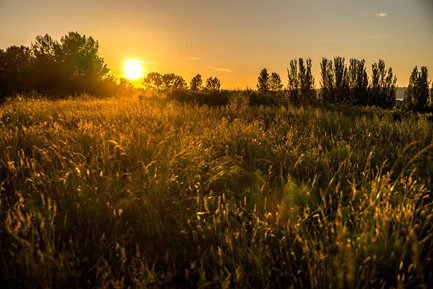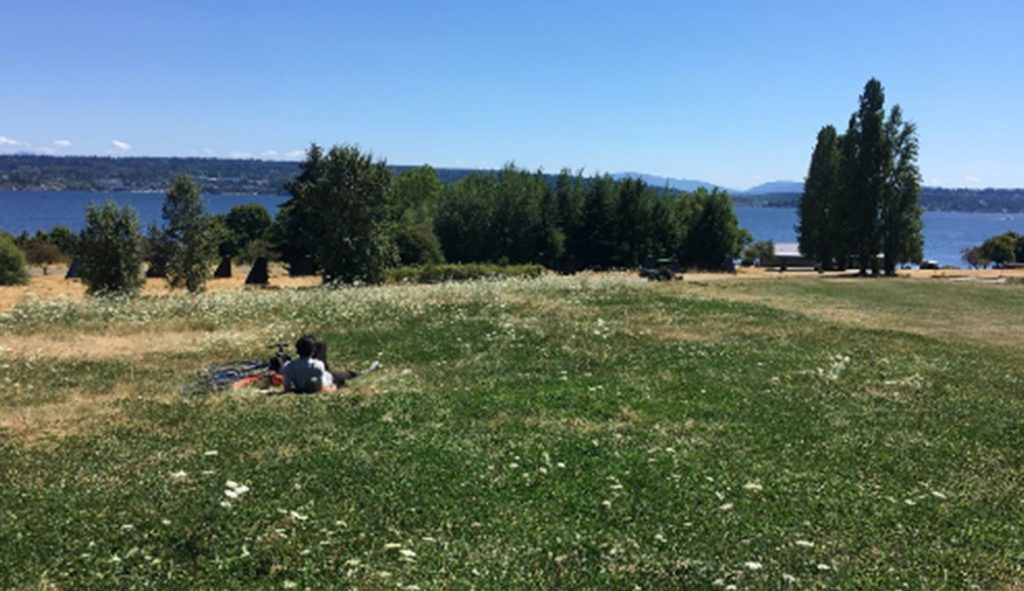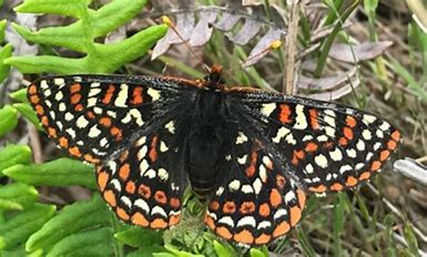
By Todd Burley, Brian Gay, Patti Bakker, and Craig Chatburn
Ecologically, Seattle is known as a place of towering trees and majestic waterways. Also hidden within many parks are meandering meadows that provide areas of respite and critical habitat for many species. In fact, some places such as the current site of Seattle Center were likely maintained as meadows by the Duwamish People. Between the Salish Sea and Lake Union, this area was known by early settlers as “the meadow.” Today, Seattle Parks and Recreation (SPR) maintains parts of many parks as meadows and is looking to expand the reaches of this ecosystem within our park system.
Meadows are important for many species because their diverse habitat includes many flowers and grasses helpful to pollinators such as butterflies and native bees. While wandering through or near these areas, you might notice a wide range of insects and birds visiting flowers and taking advantage of seeds and nesting structures found in meadow habitats. Familiar pollinating insects such as bumble bees, mason bees, hover flies, and hopefully the endangered Taylor’s checkerspot butterfly, will also be frequenting these meadows, spreading pollen, and helping to maintain these ecosystems. As a “Bee City,” Seattle has made a commitment to support bees, which are in serious decline around our country, and managing an increasing array of meadow habitat is one way to help.
The many meadows SPR maintains can be found at Genesee Park, Carkeek Park, Magnuson Park and Discovery Park, among others. Management plans at these parks identify areas to be maintained as natural meadows. This means mowing only happens every one to three years as a means of keeping woody invasive plants in check, such as Scotch Broom and Himalayan Blackberry. In all, SPR intentionally maintains over a dozen meadows in our system.
Many bird species also benefit from meadow habitats, as they nest in these grasslands and feed off the various insects that thrive there. SPR ensures that any mowing or other management in these areas is done between August and January, outside of ground nesting bird season. As Seattle is also an Urban Bird Treaty City, this is one way SPR contributes to that commitment and supports these visitors to our urban ecosystems.
During 2020, SPR realized an opportunity to expand our meadow network to more “passive turf” areas, which grew taller when mowing resources were redirected to other priorities in the city. We are now mapping areas where grass can be more intentionally left to grow naturally and add to our network of grassland meadow habitat. An update to our Turf Best Management Practices will include maintenance guidelines on how to manage these areas, similar to our meadow management standards.
SPR is also thinking about connectivity of meadow habitat through the development of a Pollinator Corridor Project. We know that having healthy habitat patches within 750 feet (2.5 football fields) of each other allows for insects and birds to move between these meadows, ensuring adequate space to prosper. Imagine a pollinator corridor from Magnuson Park down the Burke-Gilman Trail, past the Washington Park Arboretum, and down to Rainier Beach Farm and Urban Wetland. Or fly on butterfly wings from Discovery Park along the coast to Smith Cove Park, Myrtle Edwards Park, and along the soon to be developed new Waterfront Park. Like a web spanning the city, we seek to make a robust pollinator habitat network.
So, don’t be surprised if the grass looks a bit taller than usual in certain areas. Seattle Parks and Recreation is creating the space for native species to thrive, even in the midst of a rapidly urbanizing community. Grab a picnic blanket and settle in to enjoy the flowing meadows, fragrant flowers, and quietly hardworking insects.



